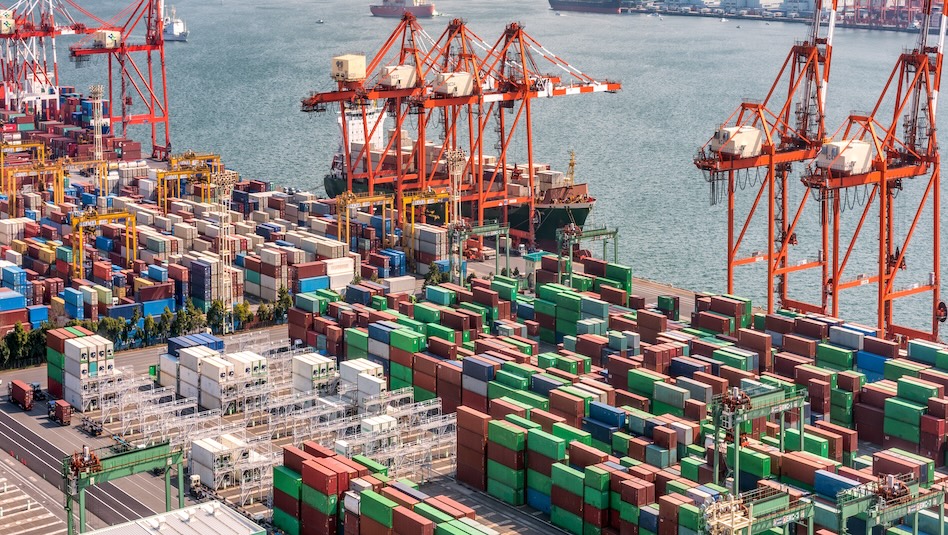




Monthly Economic Update: One for the road
 DOWNLOAD
DOWNLOAD

Inflation Update: Still low, still slow
 DOWNLOAD
DOWNLOAD

Philippines Trade Update: Exports momentum continues
 DOWNLOAD
DOWNLOAD


2024 BoP surplus narrows sharply

The Philippines’ balance of payment (BoP) surplus sharply narrowed in 2024, falling short of the central bank’s full-year projection.
Data from the Bangko Sentral ng Pilipinas (BSP) showed the full-year BoP position stood at a surplus of USD 609 million last year, plunging by 83.4% from the USD 3.672-billion surplus at end-2023.
This was also much lower than the BSP’s full-year projection of USD 3.5 billion.
 The BoP shows a glimpse of the country’s transactions with the rest of the world. A surplus shows that more funds came into the country, while a deficit means more money fled.
The BoP shows a glimpse of the country’s transactions with the rest of the world. A surplus shows that more funds came into the country, while a deficit means more money fled.
“Based on preliminary data, the decline in the cumulative BoP surplus was due to higher trade-in-goods deficit and lower net receipts from trade in services and net foreign borrowings by the National Government (NG),” the BSP said.
Data from the local statistics agency showed the trade deficit widened by 3.2% year on year to USD 49.96 billion in the January-November period.
Outstanding external debt rose to a record USD 139.64 billion as of end-September, data from the BSP showed.
“This decline was partly muted, however, by the continued net inflows from personal remittances as well as net foreign portfolio and direct investments,” the central bank added.
In December alone, the BoP swung to a deficit of USD 1.508 billion, a reversal of the USD 642-million surplus a year earlier.
“The BoP deficit in December 2024 reflected the BSP net foreign exchange operations and drawdown on the NG deposits with the BSP to pay off its foreign currency debt obligations.”
Last year, the government raised USD 2 billion from global bonds in May and another USD 2.5 billion from its dollar bond offer in August.
At its end-December position, the BoP reflects a gross international reserve (GIR) level of USD 106.3 billion, down by 2% from USD 108.5 billion as of end-November.
“Specifically, the latest GIR level ensures availability of foreign exchange to meet balance of payments financing needs, such as for payment of imports and debt service, in extreme conditions when there are no export earnings or foreign loans,” the central bank said.
The level of dollar reserves was enough to cover 7.5 months of imports and payments of services and primary income. It is also equivalent to about 3.7 times the country’s short-term external debt based on residual maturity.
Rizal Commercial Banking Corp. Chief Economist Michael L. Ricafort said the wider BoP deficit in December was partly due to the trade shortfall in recent months.
“There is persistent import growth, particularly in energy, food and capital goods that likely outpaced export performance,” said John Paolo R. Rivera, a senior research fellow at the Philippine Institute for Development Studies.
“The ongoing decline in exports due to weaker global demand particularly from major trading partners like China has exacerbated the trade deficit, a major component of the current account,” he added.
Mr. Ricafort said the peso volatility, especially from November to December, might have affected the BoP position.
“The strong US dollar also increased debt servicing costs for US dollar-denominated obligations,” Mr. Rivera added.
At end-2024, the peso closed at PHP 57.845, declining by PHP 2.475 or 4.28% from its end-2023 finish of PHP 55.37 against the dollar.
The peso fell to a record-low PHP 59 level thrice last year — twice in November and once in December.
Mr. Rivera said the recovery in tourism receipts and business process outsourcing revenues might not have been enough to “fully offset the drag from the trade imbalance.”
“Also, the government and private sector’s efforts to settle maturing foreign debt obligations may have contributed to outflows in the financial account, worsening the overall BoP position,” he added.
For the coming months, the BoP could improve if structural inflows continue to increase, Mr. Ricafort said.
“Any improvement in BoP data and in GIR data for the coming months could still help provide a greater cushion for the peso exchange rate versus the US dollar especially against any speculative attacks, as well as help strengthen the country’s external position,” he said.
Recent reforms would also help attract more investments into the country, Mr. Ricafort said.
In November, President Ferdinand R. Marcos, Jr. signed into law the Corporate Recovery and Tax Incentives for Enterprises to Maximize Opportunities for Reinvigorating the Economy.
The law expands fiscal incentives and lowers the corporate income tax on certain foreign enterprises.
The BSP projects a BoP surplus of USD 2.1 billion for 2025, equivalent to 0.4% of gross domestic product. – Luisa Maria Jacinta C. Jocson, Reporter
This article originally appeared on bworldonline.com





 By BusinessWorld
By BusinessWorld